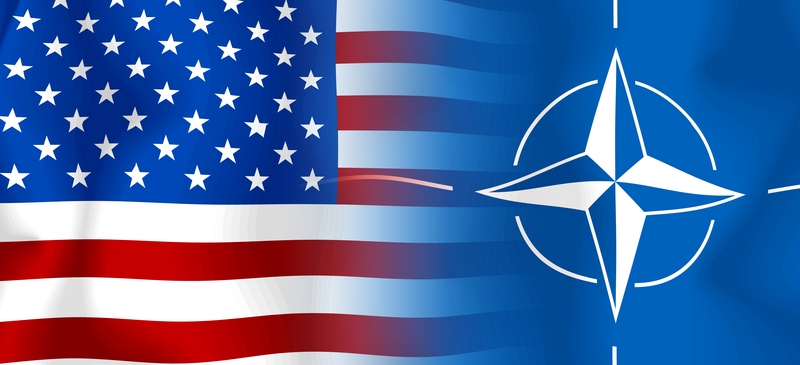Why Does the U.S. Have Military Bases in Europe?
The U.S. established its military presence in Europe after World War II to support post-war reconstruction and counter Soviet influence during the Cold War. Today, these bases are critical for NATO’s collective defense, rapid response to global crises, and maintaining stability in a region that remains a geopolitical hotspot. According to the Council on Foreign Relations, approximately 84,000 U.S. service members are stationed in Europe as of early 2025, with numbers fluctuating due to rotational deployments and joint exercises.
These bases serve multiple purposes: they deter potential adversaries like Russia, support NATO allies, and act as staging points for operations in the Middle East, Africa, and beyond. From airfields hosting advanced fighter jets to naval stations supporting maritime operations, each base plays a unique role in the U.S.’s global defense strategy. Let’s dive into the list of U.S. military bases in Europe, organized by country, with details on their locations, roles, and strategic significance.
Comprehensive List of U.S. Military Bases in Europe
The U.S. operates over 40 military installations across Europe, with the largest concentrations in Germany, Italy, and the United Kingdom. Below, I’ve compiled a detailed list of key bases, drawing from authoritative sources like the U.S. Department of Defense and Visual Capitalist.
Ramstein (Germany), USAG Wiesbaden (Germany), Naval Support Activity Naples (Italy), Aviano Air Base (Italy), Naval Station Rota (Spain), RAF Lakenheath/Mildenhall (United Kingdom), and several army garrisons in Poland and the Baltics for rotational forces and forward presence. These hubs are focal points for NATO and transatlantic operations.
| Country | Major U.S. Bases / Garrisons | Primary Function |
|---|---|---|
| Germany | Ramstein AB, Spangdahlem AB, Kaiserslautern (KMC), Wiesbaden (Lucius D. Clay Kaserne), Grafenwöhr, Vilseck, Ansbach, Bavaria (Grafenwöhr/Leighton Barracks) | Air mobility, EUCOM hub, logistics, Army garrisons, training areas |
| Italy | Naval Support Activity Naples, Aviano AB, Sigonella, Camp Darby, Vicenza (USAG Italy) | Naval command, air operations, Army brigade headquarters, logistics |
| United Kingdom | RAF Lakenheath, RAF Mildenhall (USAF operations), RAF Alconbury (USAFE presence historically) | Air bases for USAF / NATO operations |
| Spain | Naval Station Rota, Morón Air Base | Naval logistics, air refueling, staging |
| Belgium / Benelux | USAG Benelux (Chievres/Cheval). Note: NATO facilities (SHAPE) are in the region. | Support to NATO and EU institutions, logistics |
| Netherlands | US units operate from NATO airfields (e.g., Volkel) and cooperate with NATO AWACS at Geilenkirchen (multinational). | NATO interoperability, AWACS support |
| Poland | Powidz (air base use), USAG Poland locations (rotational/forward presence), Jasionka (logistics hub — evolving) | Forward presence, logistics, rotational forces |
| Romania | Mihail Kogălniceanu Air Base (used for rotations), other forward sites | Rotational deployments, logistics |
| Bulgaria | Graf Ignatievo, Bezmer (rotational use) | Training and rotational access for U.S./NATO aircraft and ground units |
| Greece | Souda Bay (naval access, NATO), Stefanovikio (rotational air use) | Naval logistics, maritime operations |
| Turkey | Incirlik (historically used by USAF — status can change with policy); other liaison sites | Regional air operations (subject to host-nation agreements) |
| Baltics (Estonia, Latvia, Lithuania) | Small forward locations, rotational presence, NATO enhanced forward presence sectors | Deterrence, rotational combat units and training |
| Norway / Denmark / Portugal | Periodic U.S. activity at airfields and naval ports (e.g., Lajes/Portugal historically, Norway training areas) | Training, expeditionary logistics, NATO cooperation |
Tip: This table highlights major, long-standing installations. There are numerous satellite sites, temporary locations, and host-nation facilities used for exercises or logistics. For a complete and official installation list, check U.S. Army and EUCOM resources (links below).
Major U.S Installations — Descriptions
Germany: The Cornerstone of U.S. Military Operations in Europe
Germany is home to the largest U.S. military presence in Europe, hosting around 34,894 troops as of 2024. It serves as the headquarters for U.S. European Command (EUCOM) and U.S. Army Europe and Africa (USAREUR-AF). Here are the major bases:
| Base Name | Location | Primary Branch | Key Functions |
|---|---|---|---|
| Ramstein Air Base | Rhineland-Palatinate | Air Force | Airlift hub, USAFE-AFAFRICA HQ, NATO operations |
| Spangdahlem Air Base | Rhineland-Palatinate | Air Force | F-16 fighter wing, NATO air defense |
| USAG Bavaria (Grafenwoehr) | Bavaria | Army | Largest training area, joint NATO exercises |
| USAG Wiesbaden | Hesse | Army | USAREUR-AF HQ, command and control |
| USAG Stuttgart | Baden-Württemberg | Army, Marine Corps | EUCOM and AFRICOM HQ |
| USAG Ansbach | Bavaria | Army | Helicopter operations, logistics |
| USAG Rheinland-Pfalz (Baumholder) | Rhineland-Palatinate | Army | Combat and support units |
Ramstein Air Base is often called the “Gateway to Europe” due to its role as a primary airlift hub, supporting missions from troop transport to humanitarian aid with aircraft like C-130s and C-17s. Grafenwoehr Training Area, part of USAG Bavaria, is the Army’s largest training ground in Europe, hosting joint exercises with NATO allies to maintain readiness.
Italy: A Mediterranean Powerhouse
Italy’s strategic location in the Mediterranean makes it a key hub for U.S. operations in Southern Europe, North Africa, and the Middle East. Approximately 12,319 U.S. troops are stationed here, supporting Army, Navy, and Air Force missions.
| Base Name | Location | Primary Branch | Key Functions |
|---|---|---|---|
| Aviano Air Base | Friuli-Venezia Giulia | Air Force | F-16 fighter wing, NATO southern flank |
| Naval Air Station Sigonella | Sicily | Navy | Maritime patrol, logistics hub |
| Naval Support Activity Naples | Campania | Navy | U.S. Sixth Fleet HQ, naval operations |
| USAG Vicenza (Camp Darby) | Tuscany | Army | Logistics, rapid deployment support |
| Ghedi Air Base | Lombardy | Air Force | Nuclear storage, air operations |
Naval Air Station Sigonella is a critical logistics hub, supporting maritime patrols and reconnaissance missions in the Mediterranean. Aviano Air Base hosts the 31st Fighter Wing, equipped with F-16s, and plays a pivotal role in NATO’s southern flank defense.
United Kingdom: A Hub for Air Power and Intelligence
The U.K. hosts approximately 10,180 U.S. troops, primarily Air Force personnel, reflecting the strong U.S.-U.K. defense partnership. These bases are crucial for air operations and intelligence gathering.
| Base Name | Location | Primary Branch | Key Functions |
|---|---|---|---|
| RAF Lakenheath | Suffolk | Air Force | F-15, F-35 operations, air superiority |
| RAF Mildenhall | Suffolk | Air Force | Air refueling, special operations |
| RAF Croughton | Northamptonshire | Air Force | Communications hub |
| RAF Menwith Hill | North Yorkshire | Air Force | Intelligence and surveillance |
RAF Lakenheath is the largest U.S. Air Force base in the U.K., hosting the 48th Fighter Wing with F-15s and F-35s. RAF Croughton serves as a vital communications hub, supporting global operations for EUCOM and NATO.
Strategic Importance of U.S. Military Bases in Europe
The U.S. military bases in Europe are more than just physical installations; they’re pillars of transatlantic security. Here’s why they’re critical:
- NATO Integration: Most bases are interoperable with NATO, hosting joint exercises and ensuring cohesion across allied forces. For example, Grafenwoehr in Germany and Powidz in Poland are key sites for multinational training.
- Deterrence Against Russia: Bases in Poland, Romania, and the Baltics, part of NATO’s Enhanced Forward Presence, counter Russian aggression, especially since the 2022 invasion of Ukraine.
- Rapid Response Capability: Bases like Sigonella and Rota enable quick deployment to crisis zones in the Middle East and Africa.
- Nuclear Sharing: Bases in Belgium, Germany, Italy, the Netherlands, and Turkey house approximately 100 B61 nuclear bombs under NATO’s nuclear-sharing program, deterring potential adversaries.
- Logistics and Communications: Facilities like RAF Croughton and USAG Stuttgart ensure seamless command, control, and logistics across Europe and beyond.
Recent Developments and Future Outlook
The U.S. military presence in Europe has evolved in response to global events. Russia’s 2022 invasion of Ukraine prompted the deployment of an additional 20,000 U.S. troops to Eastern Europe, particularly Poland and Romania, under Operation Atlantic Resolve. Recent discussions about a potential U.S.-Russia peace deal for Ukraine have raised questions about the future of these bases, with some analysts suggesting a possible reduction in troop numbers.
However, experts like Graham Allison from the Harvard Kennedy School argue that U.S. troop levels are likely to remain stable, fluctuating within historical norms. Meanwhile, European nations are increasing their defense spending, partly to address concerns about U.S. commitment to NATO, which could influence the role of these bases in the future.
Is this list exhaustive?
Short answer: Not entirely. A truly exhaustive, authoritative list of all U.S. installations, temporary operating locations, and small lease sites is maintained by the Department of Defense and service branches. Public reporting (e.g., DoD location reports, EUCOM, and Congressional Research Service studies) gives the best official snapshot, but frequent changes — rotations, agreements, or policy shifts — mean the list evolves.
Conclusion
The U.S. military bases in Europe form a complex network that underpins transatlantic security, supports NATO’s mission, and enables rapid global response. From the airlift hub at Ramstein to the naval operations at Sigonella, each base plays a vital role in maintaining stability and deterring threats. As geopolitical dynamics shift, particularly with ongoing tensions in Ukraine and debates about NATO’s future, these installations remain critical to U.S. and allied interests. For those seeking a full list of U.S. military bases in Europe, this guide offers a comprehensive resource to understand their locations, roles, and strategic importance.
The U.S. military footprint in Europe is centered on several major hubs but includes a wide network of garrisons, airfields, and port facilities — many of them multinational or dual-use with NATO partners. For more details, check out resources from the U.S. Department of Defense or explore interactive maps at ArcGIS for geographical insights.






